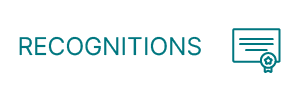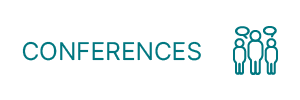How should I teach about Thanksgiving? This is a big (and frequent) question from educators to the National Museum of the American Indian and its national education initiative, Native Knowledge 360° (NK360°).
When considering how to teach about Thanksgiving, it is helpful to first name your intention. Is it teaching about the history surrounding the “first Thanksgiving”? Is it teaching about the holiday? Is it teaching gratitude?
Naming intentions and then learning more about what you want to teach is an important first step. It starts a process of better understanding an incredibly complicated but ubiquitous topic and recognizing opportunity for students to see beyond a myth.
Thanksgiving as History – The Harvest Festival
The “first” Thanksgiving is often portrayed as a friendly harvest festival where Pilgrims and generic, nameless “Indians” came together to eat and give thanks. In reality, the assembly of the Wampanoag peoples and the English settlers in 1621 had much more to do with political conflict and alliances, diplomacy and circumstance.
For centuries prior to the arrival of Europeans, the Wampanoag peoples had practice and skill in building political alliances and waging war with other Native nations. At the time of the Pilgrims’ arrival in 1621, the Wampanoag leader Ousamequin was dealing with enormous pressure from the neighboring Narragansetts, who posed a threat to his leadership and authority to assert control beyond his immediate geographic area.
On the European front, the first known written contact between the Wampanoag peoples and European traders was almost a century prior to the Pilgrims arrival on Wampanoag lands (1524). Encounters remained sporadic until the early 1600s. Alongside the pressure from the Narragansetts and the increasing frequency of visits from the European newcomers came an incredibly devastating epidemic. In the early 1600s, an unknown disease swept through Wampanoag lands. The deaths and destruction that followed hit Wampanoag communities especially hard, leaving them vulnerable to attack from neighboring tribes, especially the Narragansetts. Ousamequin made a difficult and calculated decision to ally with the English newcomers (Pilgrims) in hopes that this alliance would benefit his own people by strengthening their position against the Narragansetts.
The Wampanoag did share their land, food and knowledge of the environment with the English. Without help from the Wampanoag, the English would not have had the successful harvest that led to a festival that was later coined the “first Thanksgiving.” However, cooperation was short lived, as the English continued to attack and encroach upon Wampanoag lands despite what they had agreed to.
Learn More
- Webinar from NK360°: More Complete Narratives about Thanksgiving
- Helpful Handout from NK360°, with recommended resources for the classroom: Rethinking Thanksgiving
- Study Guide on the Harvest Festival from NK360°: The Harvest Ceremony, Beyond the Thanksgiving Myth;
- Article by historian David J. Silverman: “In 1621, The Wampanoag Tribe Had Its Own Agenda”
Thanksgiving as a Holiday
The evolution of Thanksgiving as a national holiday is remarkably disconnected from the people, places and events surrounding the 1621 harvest festival. It is a fascinating story that is a worthy topic of inquiry.
Historian Phillip Deloria (Dakota) pieces together with clear precision the evolution of the holiday in his article, “The Invention of Thanksgiving.” He explains that regional thanksgiving holidays take place over time and are advocated for and by different social and political leaders. This effort culminated with Abraham Lincoln declaring a national day of thanksgiving during the Civil War in an effort to “heal” the nation and find common celebratory ground.
However, it was not until the 20th century that the common story involving Wampanoag peoples and Pilgrims became associated with the Thanksgiving holiday. Deloria’s article makes the argument that this narrative is intentionally linked to a national holiday to create a national “American” identity of white, Protestant and Puritan work ethic. Deloria points out that this myth also “coincides nicely with Battle of Little Big Horn and Great Sioux War and gives white Americans a feeling of ‘imperialist nostalgia.’” The story also provides a way to replace the foundational history of slavery and the reality of Jim Crow and racial violence of the early 20th century with an American origin story about a nostalgic view of Pilgrims and Indians.
Learn More:
- Article by historian Philip Deloria (Dakota): “The Invention of Thanksgiving”
- Americans video from the NMAI: The Invention of Thanksgiving
- Classroom lesson from Learning for Justice: Thanksgiving Mourning
Thanksgiving as Gratitude
How and where people choose to give thanks and express gratitude is personal. The Thanksgiving holiday makes a space for this practice and affirms the value of sharing time, foods and traditions with family and community. Finding ways to help students think and talk about being thankful is a valuable way to build empathy and care for others.
Expressions of gratitude are also an opportunity to rethink how to approach the holiday and history of Thanksgiving. Developing a gratitude practice to the land itself is one step toward thinking differently about showing thankfulness. Students, families or class communities could then consider writing a land acknowledgement. Land acknowledgements are used by Native and non-Native peoples to recognize Indigenous peoples who are the original stewards of the lands on which we now live.
The act of inquiring about and listening to Native voices can be an act of showing gratitude. The more we learn about Native experiences and perspectives, including those that complicate historical narratives, the more we can truly start to give thanks for the richness of Indigenous knowledge and respect the sovereignty of Native nations today.
Learn More
- Teaching Poster from NK360°: Native Perspectives on Thanksgiving
- Webinar from NK360°: Giving Thanks
Colleen Call Smith serves as an education specialist at the Smithsonian’s National Museum of the American Indian. She earned her master’s degree in secondary education from the University of Kentucky and taught middle and high school social studies for a number of years in Kentucky, Virginia and Washington, D.C. She supports the education office in the research, development, writing and production of online resources for the Native Knowledge 360° initiative.




Leave A Comment